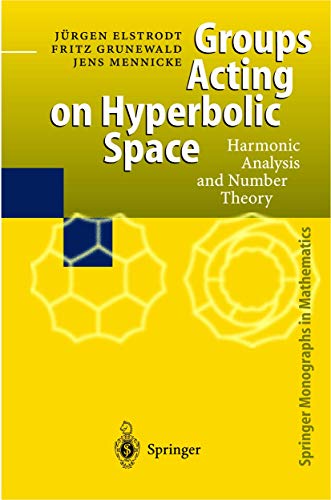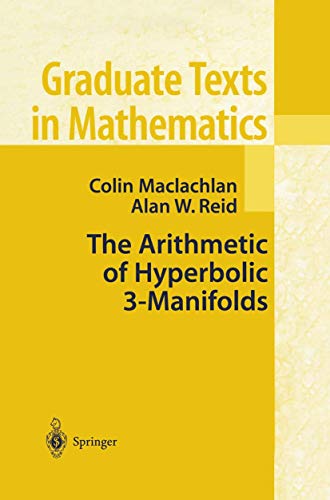- 著者
- 坪内 佐智世
- 出版者
- 明治書院
- 雑誌
- 日本語学 (ISSN:02880822)
- 巻号頁・発行日
- vol.35, no.11, pp.24-34, 2016-10
1 0 0 0 OA 肥後和男先生の御退職におもう
- 著者
- 久保 常晴
- 出版者
- 立正大学
- 雑誌
- 立正大学文学部論叢 (ISSN:0485215X)
- 巻号頁・発行日
- vol.53, pp.1-4, 1975-09-10
- 著者
- Benjamin Fine
- 出版者
- M. Dekker
- 巻号頁・発行日
- 1989
- 著者
- J. Elstrodt F. Grunewald J. Mennicke
- 出版者
- Springer
- 巻号頁・発行日
- 1998
- 著者
- Colin Maclachlan Alan W. Reid
- 出版者
- Springer
- 巻号頁・発行日
- 2003
1 0 0 0 OA 本朝通鑑 : 標記
- 著者
- 林羅山 (道春) , 林春斎 著
- 出版者
- 大槻東陽
- 巻号頁・発行日
- vol.巻第1, 1875
1 0 0 0 OA 本朝通鑑 : 標記
- 著者
- 林羅山 (道春) , 林春斎 著
- 出版者
- 博文館
- 巻号頁・発行日
- vol.1, 1897
- 著者
- 安楽 朋旦 藤井 雅留太 中村 正行
- 出版者
- 一般社団法人日本機械学会
- 雑誌
- 設計工学・システム部門講演会講演論文集 (ISSN:13480286)
- 巻号頁・発行日
- vol.2015, no.25, pp."2106-1"-"2106-4", 2015-09-23
In this study, we developed a finite element simulation program for a three-dimensional stress analysis of the rim of a road bike wheel. The cross-sectional model of the rim structure is created based on the boundary data of the rim and a three-dimensional model is created by extruding the cross-sectional model. Aluminum alloy, generally used for the rim of the road bike wheel, is assumed as the material of the rim because it is inexpensive and isotropic material.
1 0 0 0 OA 奄美大島におけるハンセン病問題とカトリック : 松原若安を中心に
- 著者
- 杉山 博昭
- 出版者
- 長崎純心大学・長崎純心大学短期大学部
- 雑誌
- 純心現代福祉研究 (ISSN:13421506)
- 巻号頁・発行日
- vol.12, pp.17-31, 2008
- 被引用文献数
- 1
1 0 0 0 教師の受容的態度および学級での三者関係が児童の感情に及ぼす影響
- 著者
- 大久保 智生
- 出版者
- 日本感情心理学会
- 雑誌
- 感情心理学研究 (ISSN:18828817)
- 巻号頁・発行日
- vol.22, pp.27, 2014
- 著者
- 南 雅則 浅川 潔司 秋光 恵子 西村 淳
- 出版者
- 一般社団法人 日本教育心理学会
- 雑誌
- 教育心理学研究 (ISSN:00215015)
- 巻号頁・発行日
- vol.59, no.2, pp.144-154, 2011
- 被引用文献数
- 6
本研究の目的は, 小学6年生の予期不安に関する調査を実施し, 中学校入学後の学校適応感との関連を検討することであった。小学生の予期不安は, 16名の中学生を対象に実施された予備調査を経て開発された「中学校生活予期不安尺度」によって測定された。さらに学校適応感を測定するため, 浅川・尾崎・古川(2003)の「学校生活適応感尺度」が使用された。研究参加者は, 男子小学生195名, 女子小学生153名であった。学校生活適応感尺度の下位尺度において以下のような結果を得た。(1) 教師との関係得点に時期×予期不安水準×性別の2次の交互作用が見出され, 予期不安低群において4月末では男子よりも女子の方が高かったが, 5月末にはその差は見られなかった。また, 予期不安高群において4月末では男子と女子の得点に有意差は見られなかったが, 5月末では男子よりも女子の方が高かった。(2) 情緒的安定性得点は, 予期不安水準の「低群」, 「中群」, 「高群」の順に高かった。(3) 部活動への意欲得点は, 4月末から5月末にかけて低下していた。以上の結果をふまえ, 学校心理学における個人—社会的発達の支援の視点から考察がなされた。
- 著者
- 大久保 智生
- 出版者
- 日本教育心理学会
- 雑誌
- 教育心理学研究 (ISSN:00215015)
- 巻号頁・発行日
- vol.53, no.3, pp.307-319, 2005-09
- 被引用文献数
- 1
本研究の目的は, 個人-環境の適合性の視点から適応状態を測定する青年用適応感尺度を作成し, その信頼性と妥当性を検証すること(研究1), 作成された適応感尺度と学校生活の要因(友人との関係, 教師との関係, 学業)との関連を検討すること(研究2)であった。研究1では中学生621名, 高校生786名, 大学生393名が, 研究2では中学生375名, 高校生572名が調査に参加した。作成された尺度の因子分析の結果から, 従来の適応感尺度の因子とは異なる「居心地の良さの感覚」, 「課題・目的の存在」, 「被信頼・受容感」, 「劣等感の無さ」の4因子が抽出された。また尺度の信頼性と妥当性を検討したところ, 個人-環境の適合性の視点から作成された適応感尺度は, 十分な信頼性と妥当性を有していると考えられた。学校生活の要因と適応感との関連について重回帰分析を用いて学校ごとに検討した結果, どの学校においても「友人との関係」が適応感に強く影響を与えていた。一方, 「教師との関係」, 「学業」と適応感の関係の構造は学校ごとに異なっていた。以上の結果から, 青年の学校への適応感について, 各学校の特徴を踏まえた上で研究を進めていく必要性が示された。
1 0 0 0 中学生の教師に対する信頼感と学校適応感との関連
- 著者
- 中井 大介 庄司 一子
- 出版者
- 一般社団法人 日本発達心理学会
- 雑誌
- 発達心理学研究 (ISSN:09159029)
- 巻号頁・発行日
- vol.19, no.1, pp.57-68, 2008
- 被引用文献数
- 1
本研究の目的は,学校教育における教師と生徒の信頼関係の重要性と,思春期における特定の他者との信頼関係の重要性を踏まえ,中学生の教師に対する信頼感と学校適応感との関連を実証的に検討することであった。中学生457名を対象に調査を実施し,「生徒の教師に対する信頼感尺度」と「学校生活適応感尺度」との関連を検討した。その結果,(1)生徒の教師に対する信頼感は,生徒の「教師関係」における適応だけではなく,「学習意欲」「進路意識」「規則への態度」「特別活動への態度」といった,その他の学校適応感の側面にも影響を及ぼすこと,(2)各学年によって,生徒の教師に対する信頼感が各学校適応感に与える影響が異なり,1年生では教師に対する「安心感」が一貫して生徒の学校適応感に影響を与えていること,(3)一方,2年生,3年生では「安心感」に加えて,「不信」や「役割遂行評価」が生徒の学校適応感に影響を与えるようになること,(4)各学年とも,生徒の教師に対する信頼感の中でも,教師に対する「安心感」が最も多くの学校適応感に影響を及ぼしていること,(5)「信頼型」「役割優位型」「不信優位型」「アンビバレント型」といった生徒の教師に対する信頼感の類型によって生徒の学校適応懸か異なること,といった点が示唆された。
- 著者
- 金子 泰之
- 出版者
- 日本カウンセリング学会
- 雑誌
- カウンセリング研究 (ISSN:09148337)
- 巻号頁・発行日
- vol.44, no.3, pp.199-208, 2011
本研究は,中学生の問題行動を研究対象とした。そして,〈規範文化の低い学校〉と〈規範文化の高い学校〉では,同じ問題行動を生徒が引き起こしていても,その動機が異なるという仮説を検討した。中学生1,306名(学年別では1年生15学級384名,2年生16学級467名,3年生17学級455名,性別では男子735名,女子571名)を対象とし,①問題行動経験尺度,②問題行動動機尺度,③規範意識尺度の3つをたずねる質問紙を実施した。③規範意識尺度をもとに,〈規範文化の低い学校〉と〈規範文化の高い学校〉の2群に分けた。そして,②問題行動動機尺度を説明変数,①問題行動経験尺度を目的変数とし,重回帰分析を2群それぞれに行った。その結果,〈規範文化の低い学校〉と〈規範文化の高い学校〉では,生徒が問題行動を引き起こす動機は異なっていることがあることが明らかとなった。同じ問題行動を引き起こしていたとしても,規範文化の水準によって問題行動を引き起こす動機は異なることがあるため,学校の特徴をふまえて教師が生徒指導を行う必要性が示唆された。
- 著者
- 濱口 佳和 渡部 雪子 臼倉 瞳 Hamaguchi Yoshikazu Watabe Yukiko Usukura Hitomi
- 出版者
- 筑波大学発達臨床心理相談室
- 雑誌
- 筑波大学発達臨床心理学研究
- 巻号頁・発行日
- no.26, pp.1-9, 2015-03-30
1 0 0 0 18 初老期高齢者の口臭と口腔内関連因子について
- 著者
- 翁 和美
- 出版者
- 社会学研究会
- 雑誌
- ソシオロジ (ISSN:05841380)
- 巻号頁・発行日
- vol.54, no.3, pp.37-54,176, 2010
The point of departure of this thesis lies in the "fact" that the management principles of S. nursing home, the first in Japan to specialize in patients suffering from dementia, aim to maintain the norms and values of daily life, which, together with the caregivers' pattern-making practices, have led its residents to form ways of being, doing, and living similar to people without dementia. This thesis attempts to pursue and envisage a concrete pathway in the system of "mutual" recognition in S. nursing home between caregivers and residents in the broader socio-political context in Japan. Notwithstanding the transformations of the new method in the regimes of care-giving and being cared for in modern industrial societies regarding people with dementia, notably in its shift from medicalization (the "disease model") to person-centered care (the "relational model"), we find in S. nursing home in addition that there are cognitive adjustments relative to both models and also relative to the "common" elements in the conduct of daily life that help caregivers to change their interpretations of people with dementia and to recognise them as being similar to themselves, tied to "common sense" and narrative unity in age, yet also as being "communicable" partners. In the conduct of daily life: getting up in the morning, cooking, eating, and sleeping at night - caregivers (people without dementia) are no different from people with dementia. While the "disease model" underlies caregivers' acceptance of patients, cognitive adjustments relative to these "common" elements endorse caregivers' sympathy for residents (patients), which, although one-sided, complete the "relational model" as the caregivers' primary mode of operation at S. nursing home. Three key concerns may greatly enrich not only academic studies of people with dementia, but also the various regimes of care-giving and being cared for in modern industrial societies. They constitute the conditions necessary to realise a "mutual" cognition between nursing home caregivers and residents with dementia. First, the malleable qualities of a public location (the nursing home): conditions similar to a home-like atmosphere enable nursing home caregivers to forge ties through situational cognition. Second, caregivers' pattern-making practices under the conditions of the first mode make it possible to refer to a "common" element in both people with dementia and those without: the most basic determination of people struggling to cope with their own life events, such as dementia, and improving their circumstances through their own intention and will. Lastly, the requirement that the "relational model" affiliate with the "disease model" allows nursing home caregivers to take advantage of chances of communication with people with dementia, resulting in depathologisation. Although both are one-sided, the cognitive adjustments relative to both the "disease model," as caregivers' full acceptance of people with dementia, and the "relational model," as caregivers' primary mode of operation, are necessary for "mutual" recognition between caregivers and people with dementia to take place.




